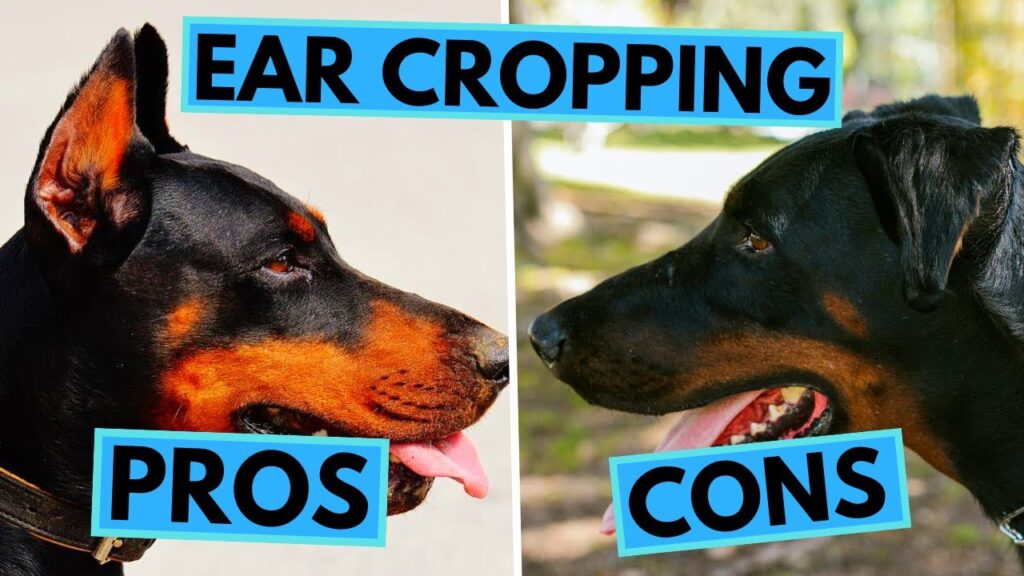
doberman puppy cropped ears
Table of Contents
- The Doberman Ear Cropping Procedure
- To Crop or Not to Crop?
The Doberman Pinscher is a striking breed, standing 26 to 28 inches tall at the shoulder and weighing between 60 to 100 pounds. Known for its wedge-shaped head, the Doberman’s ears may be cropped or left natural. When uncropped, the ears hang naturally, and the tail is docked. For more details about this breed, check out our Doberman Pinscher Breed Guide.
Ear cropping is a common practice for Dobermans. This surgical procedure involves removing part of the dog’s ear to create a more upright appearance. Typically performed on puppies between 8 to 12 weeks old, the procedure involves trimming the ears, stitching the edges, and taping them to a hard surface for several weeks to ensure they stand erect. It’s important to have this procedure done by a veterinarian experienced in ear cropping. For more information on ear cropping in dogs, visit Ear Cropping for Dogs.
A Doberman with uncropped ears presents a very different look. Cropped ears are an integral part of the breed’s traditional appearance and character, with various cropping styles including short, medium, and the longer standard show crop. Many believe that cropping enhances the breed’s distinctive and striking appearance.

The Doberman Ear Cropping Procedure
Ear cropping surgery for Dobermans is performed under anesthesia and typically takes about 30 minutes. After the procedure, the ears are taped to encourage them to stand upright, which generally takes 5 to 6 months. However, for longer ear crops, it may take up to a year for the ears to fully stand. The prolonged healing process can be more uncomfortable for the dog than the surgery itself, which contributes to the debate about the procedure’s necessity and ethics.
Post-surgery, diligent aftercare is crucial to prevent infection and ensure the ears remain upright. If a Doberman owner is not prepared to commit to the extensive aftercare required, ear cropping may not be the right choice

To Crop or Not to Crop?
Originally, ear cropping was performed for functional reasons. As a guard dog, the Doberman benefited from upright ears, which enhanced its hearing capabilities—a crucial trait for a watchdog. Nowadays, ear cropping is primarily done to meet show standards or for personal preference.
Ear cropping is an elective procedure with no known health benefits and is done solely based on the owner’s choice. Historically, it was a common practice to achieve a particular look, but it’s now outlawed in some countries. Although not banned or regulated in the U.S., it is increasingly controversial. Some states are considering legislation to prohibit the procedure, but no laws have been passed yet.
The American Kennel Club (AKC) views ear cropping as essential for maintaining breed character in certain breeds. In contrast, the American Veterinary Medical Association (AVMA) opposes the practice, citing its purely cosmetic nature and the unnecessary risks involved.
The procedure is becoming less common, as it’s not widely taught in veterinary schools, and fewer veterinarians are willing to perform it. Dog owners are also becoming more aware of the controversy surrounding ear cropping. For those involved in dog shows, it’s worth noting that the AKC states that dogs without docked tails or cropped ears can still be competitive.
To learn more about the Doberman Pinscher, check out “Everything Your Family Needs to Know About the Doberman Breed.”

Doberman Ear Cropping Pros & Cons: Should You do it?
Deciding whether to crop your Doberman Pinscher’s ears is a topic that sparks a lot of debate among dog owners. In this article, I’ll break down the real-world pros and cons of ear cropping, drawing on my own experiences with Dobermans, to help you make an informed choice for your dog.
It’s important to note that ear cropping isn’t mandatory. Many Doberman owners opt to keep their dog’s ears in their natural state. Although the breed standard in the United States calls for cropped ears, this mainly matters if you plan to show your dog in AKC conformation events.
In short, there’s no definitive answer when it comes to cropping your Doberman’s ears—it’s ultimately up to you. There are no laws or regulations in the U.S. mandating ear cropping, although some places do have restrictions against it. The American Kennel Club’s breed standard does call for cropped ears if you plan to show your Doberman in conformation events. Otherwise, this standard likely won’t impact your decision.

